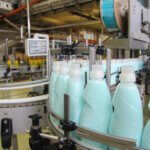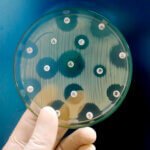1. What is ISO 17299-3 testing, and what is its intended use?
ISO 17299-3 is a standard test for analyzing the deodorant properties of textile products. The purpose is to quantify the ability of textiles to reduce the concentration of specific odoriferous chemicals thus determining their deodorant effectiveness.
2.What is the scope of products for ISO 17299-3 test?
The standards cover textile products, including woven fabric, knit, and non-woven, fibers and yarns, braiding products, tapes, and slings.
3.What is the Principle of ISO 17299-3 odor testing?
The method is based on gas chromatography, which measures the concentration of some odoriferous chemicals before and after exposure to a specimen of the textile.
4.Which specific chemicals are prescribed for use in the ISO 17299-3a testing procedure?
The ISO 17299-3a method tests various chemicals known for their potent odors, such as indole, isovaleric acid, nonenal, and acetic acid. These chemicals are pivotal in evaluating the effectiveness of textiles designed for odor control.
5.What is the procedure for the ISO 17299 testing?
There are two methods for this test. Method A avoids direct contact of the odor chemical with the specimen while in Method B this chemical is applied to the specimen directly.
6.List the instruments required for conducting ISO 17299-3 tests.
To comply with ISO 17299-3a testing, one must utilize particular equipment, including a gas chromatography system with a flame ionization detector or a mass-selective detector. other necessary tools consist of conical flasks, sealing film, injection syringes and a controlled environmental chamber meeting ISO 139 regulations.
7.What challenges could arise when implementing the ISO 17299-3 testing protocol?
The preparation of chemical solutions, the environmental conditions to be controlled consistently, and the equipment for gas chromatography are to the dot in their calibration.
8.How is the effectiveness of deodorant properties measured quantitatively in this test?
The effectiveness of textiles in managing odors is quantitatively assessed by the reduction in concentration of odor-causing chemicals. This comparison is made in a controlled setting, between samples with and without textile specimens.
Odor Reduction Rate (ORR)
The reduction rate of the concentration is calculated using the Formula.
ORR = [(B – A)/B] x 100
where,
ORR is the odor reduction rate in percentage;
B is the average of the concentration of testing gas without a specimen;
A is the average of the concentration of testing gas with a specimen
9.What are the standard references for ISO 17299-3?
The important references for ISO 17299-3 testing include ISO 139 which covers standard atmospheric conditions and ISO 3696 which gives information about the water quality for preparing solutions.
10.What are the benefits of ISO 17299-3 compliance for manufacturers?
For textile manufacturers, adhering to the ISO 17299-3 standard ensures that products with deodorant claims meet stringent international requirements. This compliance boosts consumer confidence and enhances the marketability of the products.
11.What is the future perspective of ISO 17299-3 testing?
As demand from consumers for functional textiles increases, particularly within the domains of sports and healthcare, the necessity and relevance for testing applications under ISO 17299-3 will probably expand to include more state-of-the-art technical methodologies and wider chemical evaluations.
12.Where can I learn more about ISO 17299-3 testing?
For more details, always check the official website of ISO or professional training programs from accredited organizations in textile testing and certification.
13.Why Choose Microbe Investigations (MIS)?
At Microbe Investigations, we specialize in conducting ISO 17299-3 tests to evaluate the deodorant properties of textiles designed to combat unpleasant odors from microbes, sweat, and other impurities. Our laboratory is fully equipped with state-of-the-art gas chromatography equipment and adheres to stringent international standards to ensure precise and reliable results. Trust us to certify the effectiveness of your textile products in odor management, enhancing their marketability and consumer appeal. Reach out to us for more information on our services.









